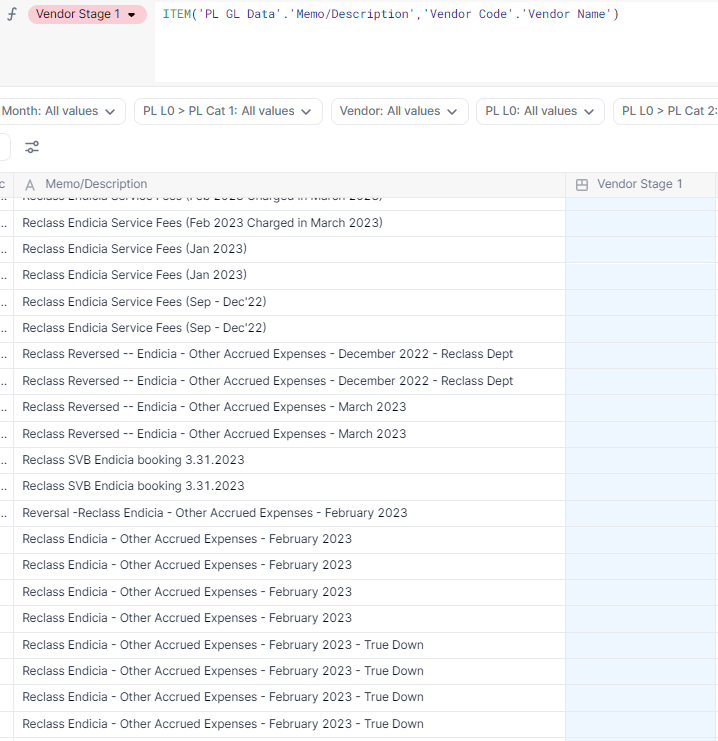Hi!
Can someone please help me to find the vendor names from the description of a transaction from a list of vendor list that I already have?
Right now, with the help of ITEM function its able to only recognize if the description has only the full vendor name from the list. But I want to populate vendor names by finding the vendor names in the description among other extra texts as well.
For example,
- if my Description is “Amazon.com” ITEM function is able to recognize the vendor name and populate Amazon.com from the list that I have as a dimension.
- if the description is “Orders from Amazon.com”, its not able to find “Amazon.com” among the other texts in the description.
So I’m looking for a way to find these vendor names from the description which has other text apart from the vendor name and populate it.
Thank you!















